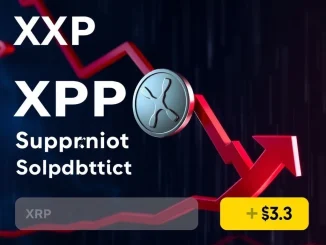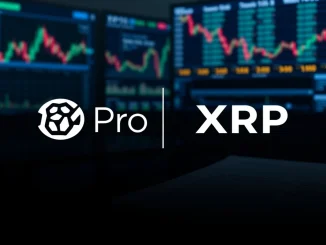
Are you keeping an eye on the pulse of the cryptocurrency market? If so, you’ve likely encountered the Crypto Fear and Greed Index. This popular tool provides a snapshot of the prevailing emotions driving investor behavior. Currently, the index holds steady at 64, firmly within the ‘Greed’ territory. But what exactly does this number tell us, and how should investors react when the market is feeling so optimistic?
Understanding the Crypto Fear and Greed Index
The Crypto Fear and Greed Index, developed by Alternative.me, is designed to measure the general sentiment in the cryptocurrency market. It operates on a simple premise derived from Warren Buffett’s famous quote: “Be fearful when others are greedy, and greedy when others are fearful.”
The index scale ranges from 0 to 100:
- 0-24: Extreme Fear – Indicates investors are overly worried, potentially signaling a buying opportunity.
- 25-49: Fear – Still cautious sentiment, but less intense than extreme fear.
- 50: Neutral – Market sentiment is balanced.
- 51-74: Greed – Investors are becoming overly optimistic, potentially signaling a market correction risk.
- 75-100: Extreme Greed – Indicates investors are euphoric and potentially reckless, often seen near market tops.
The index stood at 64 today, mirroring yesterday’s reading, which confirms the market is currently operating with a ‘Greed’ mindset.
What Drives the Bitcoin Fear and Greed Reading?
The index isn’t just a random number. It aggregates data from six different sources to provide its reading. While it’s often referred to in relation to Bitcoin, it reflects the broader crypto market sentiment as Bitcoin typically leads the market.
Here’s a breakdown of the components and their weightings:
- Volatility (25%): Measures the current volatility and maximum drawdown of Bitcoin compared to average values. High volatility often signals a fearful market.
- Market Momentum/Volume (25%): Compares the current volume and market momentum (price changes) to recent averages. High buying volume in a positive market suggests greed.
- Social Media (15%): Analyzes posts on platforms like Twitter, focusing on specific hashtags and the speed of interactions. High engagement and positive sentiment can indicate greed.
- Surveys (15%): Gathers data from weekly crypto polls. (Note: This component is currently paused).
- Bitcoin Dominance (10%): Measures Bitcoin’s share of the total crypto market cap. Rising dominance during a rally can signal fear in altcoins, while falling dominance during a rally can signal greed for altcoins.
- Google Trends (10%): Analyzes search queries related to Bitcoin. A surge in searches for terms like “Bitcoin price manipulation” might suggest fear, while searches for “buy Bitcoin” might suggest greed.
Interpreting the Current Crypto Greed Index at 64
A reading of 64 means the market is leaning towards optimism and positive sentiment. Investors are likely feeling confident, perhaps expecting prices to continue rising. This level of ‘Greed’ isn’t in the extreme territory yet, but it’s well past neutral. Historically, periods of high greed can precede market corrections as prices may become overextended.
Key takeaways from a 64 reading:
- Increased Confidence: Many investors are comfortable holding or buying assets.
- Potential for Overvaluation: Assets might be trading above their intrinsic value based purely on speculation.
- Higher Risk: A sudden negative news event could trigger a rapid sell-off as sentiment shifts quickly.
- Confirmation Bias: Investors might be more likely to see only positive signs and ignore potential risks.
Investing with the Fear Greed Index: Actionable Insights
The index is a valuable tool, but it shouldn’t be your only guide for investing with fear greed index data. Think of it as a sentiment barometer.
- Counter-Signal: Some traders use the index as a counter-indicator. When the index is high (Greed), they consider taking profits or reducing exposure. When it’s low (Fear), they look for potential buying opportunities.
- Confirmation Tool: Others use it to confirm signals from other technical or fundamental analysis. If other indicators suggest caution and the index is high, it adds weight to the cautious view.
- Risk Management: A high index reading is a good reminder to assess your portfolio risk. Are you overexposed? Do you have a strategy for a potential downturn?
It’s crucial to remember that the market can remain ‘Greedy’ for extended periods, especially during strong bull runs. The index doesn’t predict the future, but it does highlight the prevailing emotional state of the market participants.
Challenges and Limitations
While insightful, the index has limitations:
- It’s primarily focused on Bitcoin, although it reflects broader market sentiment.
- The weighting of components is determined by the creators and might not perfectly capture all market dynamics.
- It doesn’t account for macroeconomic factors or specific project developments.
- Surveys, a significant component, are currently paused, potentially impacting the reading’s nuance.
Conclusion: Navigating Greed with Prudence
The Crypto Fear and Greed Index remaining at 64 signals that ‘Greed’ is the dominant emotion in the market right now. This level isn’t extreme, but it serves as a clear indicator of increased optimism and potential complacency among investors. Understanding this crypto market sentiment is vital.
While ‘Greed’ can fuel further price increases, it also signals a time to exercise caution. Use the index as part of a broader analysis framework. Combine its sentiment reading with technical analysis, fundamental research, and sound risk management practices. Staying informed about the Bitcoin Fear and Greed level helps you gauge the emotional temperature of the market, but wise investing requires a cool head, especially when others are feeling greedy.



